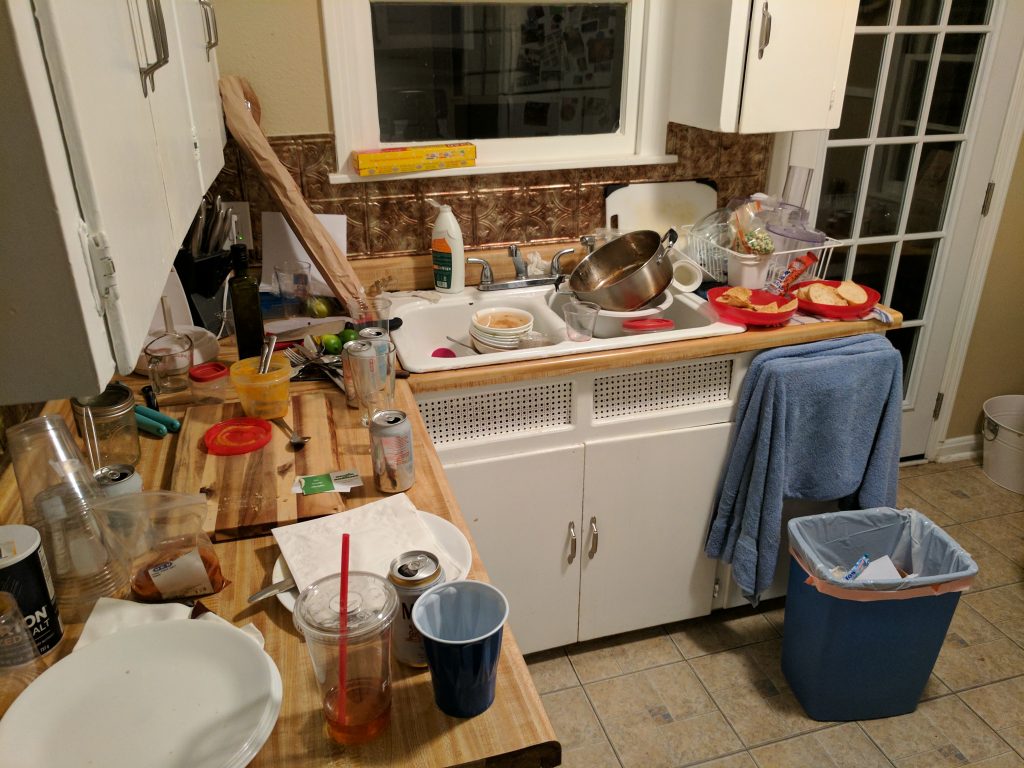Season #1 was a lot of winging it. None of us had seen each other skits until the night of the show. Vianca had never cooked in a restaurant or for 12 people, let alone a four-course vegan dinner in a kitchen that only had a few more pieces of cookware than your average workplace breakroom. I’m pretty sure almost no one had any experience in acting or waiting tables. We weren’t even sure if we could fit all 12 guests into my living room.
So we invited our most forgiving and supportive friends. All flubs were overlooked and the only real criticism was that a few guests said they kept trying to “figure it out”. There was nothing to figure out. Stuff happened. The end.
Here’s just a few of the issues and lessons learned that came up. Mostly they are in the areas that I worked on more directly. I’ms ure there were loads of things other people could share on their experiences.
The Curious Dinner Tech
I wanted to have the ability to make all the lights in the house to go off in an instant. This required a lot of extension cords, which led into what came to be known as “The Control Room”. There were also lots of cables going to various speakers around the living room. This way we could pipe in the laugh tracks and background noise. It was surprising how effective playing some “dining room chatter” tracks will get people to start talking. The off-beat laughter (controlled by maestro Andy) was timing-perfect and triggered its own laughter. The Control Room in this first iteration of Curious Dinners was just a couple computes and a couple power strips to “turn off” the lights.
We also had the motion-sensing dolphin and piano floormat in the bathroom, LEDs under the table and candles on the table – all controlled by remote control. There were also some colored disco lights that we quickly put up when we needed to and hid when we were finished with them.
The robot out front had a walkie talkie stuffed into him so that we could talk with guests as if we were the robot. We didn’t think this all the way through though: since the robot’s walkie talkie was hiden inside his guts, the guests couldn’t press the button to talk back to us. As a result, we didn’t know when they had said something. It was janky but they got the point.
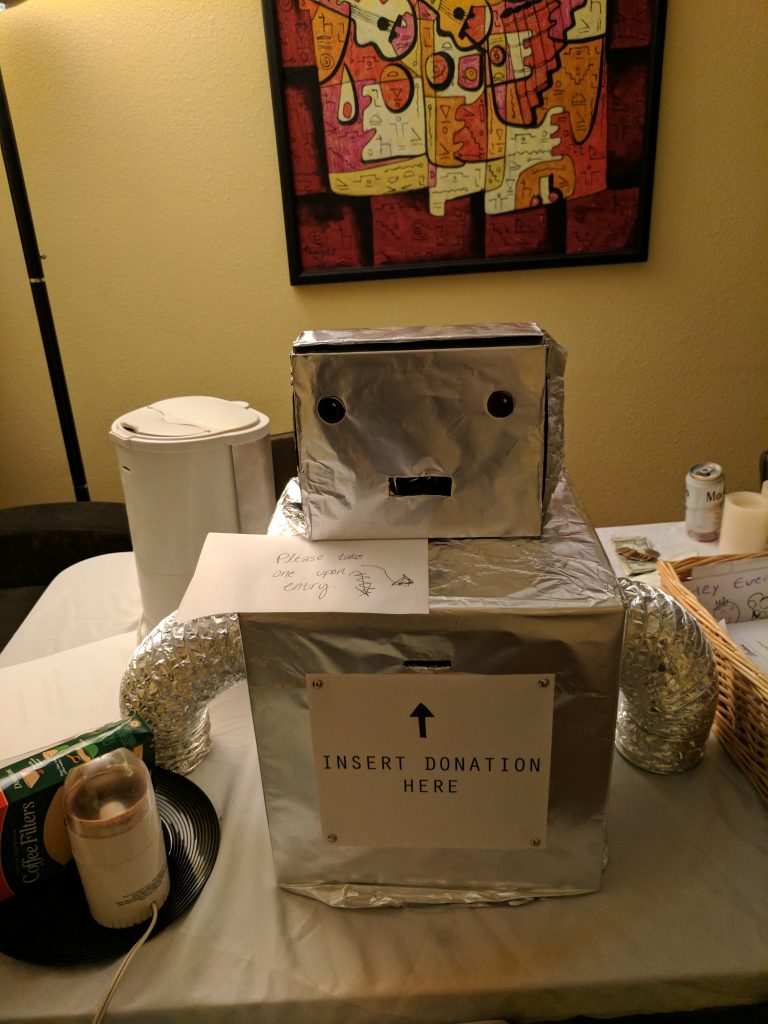
The Curious Dinner Skits
The small talk (my contribution to the skits) was so cringy to listen to people do and we thought it was a complete flop. However when the feedback came in the next day it turned out to be one of people’s favorite things. The participatory nature of it was what made it a winner, I think. People liked the challenge of listening for when it was their turn. We did have issues with one person shuffling the cards right away, which totally messed it all up and took a few minutes to undo. There were other issues and over the seasons we finally got it figured out. Eventually I landed on stapling the cards together. (To make this story simpler I omitted the fact that there were other non-card versions that flopped before we landed on the stapled card solution).
Having people get up and walk over to pet fake horses made out of socks was fun. The horses were really cool. The prop-makers (Matt and Vianca, I think) did an awesome job with them. I wish I had a photo to share.
I think all the skits went over really well and I was proud to know so many creative people. The canned laughter and background chatter was really eye-opening. It works ridiculously well.
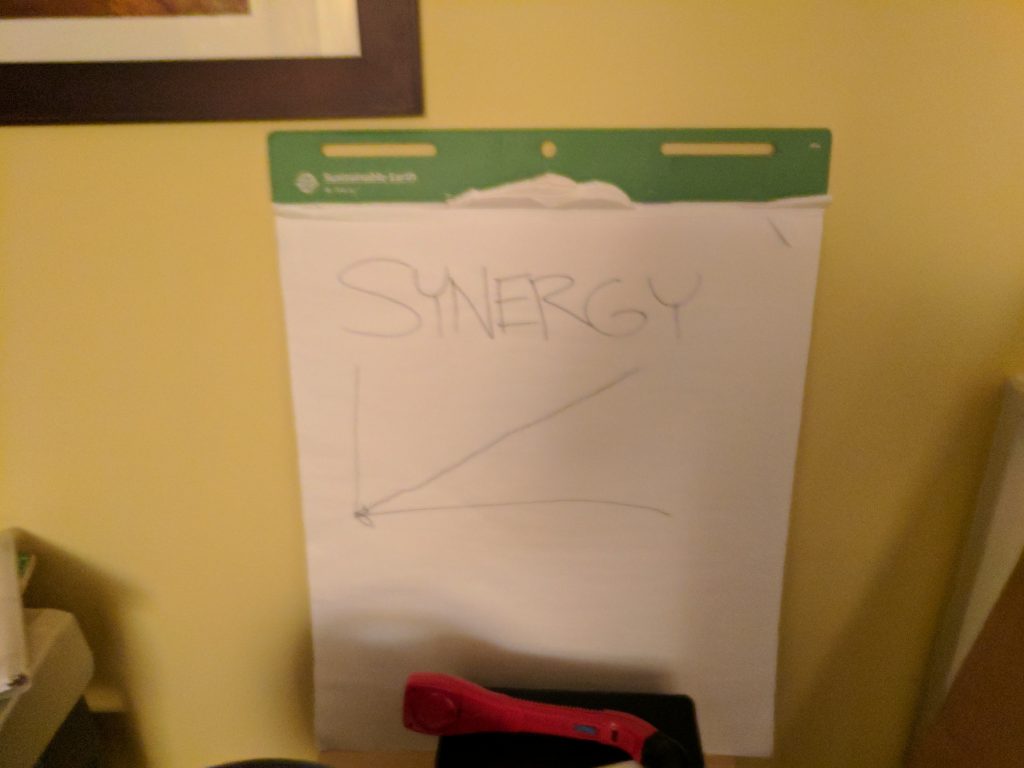
The Curious Dinner Food
This went smoothly. Except one night when it fell behind and I improvised the Under The Sea skit. We had not done that in the first nights of the show but continued to keep it in for the rest of the season.
The possum milk was very popular and we ran out a couple times. Usually we used Rumchata. One time we ran out and Kate decided to make more by mixing some old vodka with some half and half. People did not like that at all.
When we told people they had been chosen to come to the (free) dinner we asked them their dietary preferences and restrictions, figuring that we would find a meal that would accommodate all. The answers were very enlightening. The intersection of all dietary restrictions was such that we’d probably have to just give people raw potatoes and water. We ended up chosing to accommodate one person a little more specially and then servingfaull vegan for the rest of the people. I can see why other dinner parties post the menus to see *before* people sign up to come.
Other Notes
The ending was great and we got applause despite our refusal to come out and take a bow. (Always leave them wanting more, right?)
There was some debate about what or if to charge but we didn’t charge anything. As the seasons progressed, things got more expensive and we had to ask for contributions. Even with that still were in the red but not as much as we would have been. And that didn’t even include our time. We would probably have to charge people literally about $500 a ticket if we were going to even make minimum wage on this. It was definitely a labor of love. Also, for the most part, it was fun.
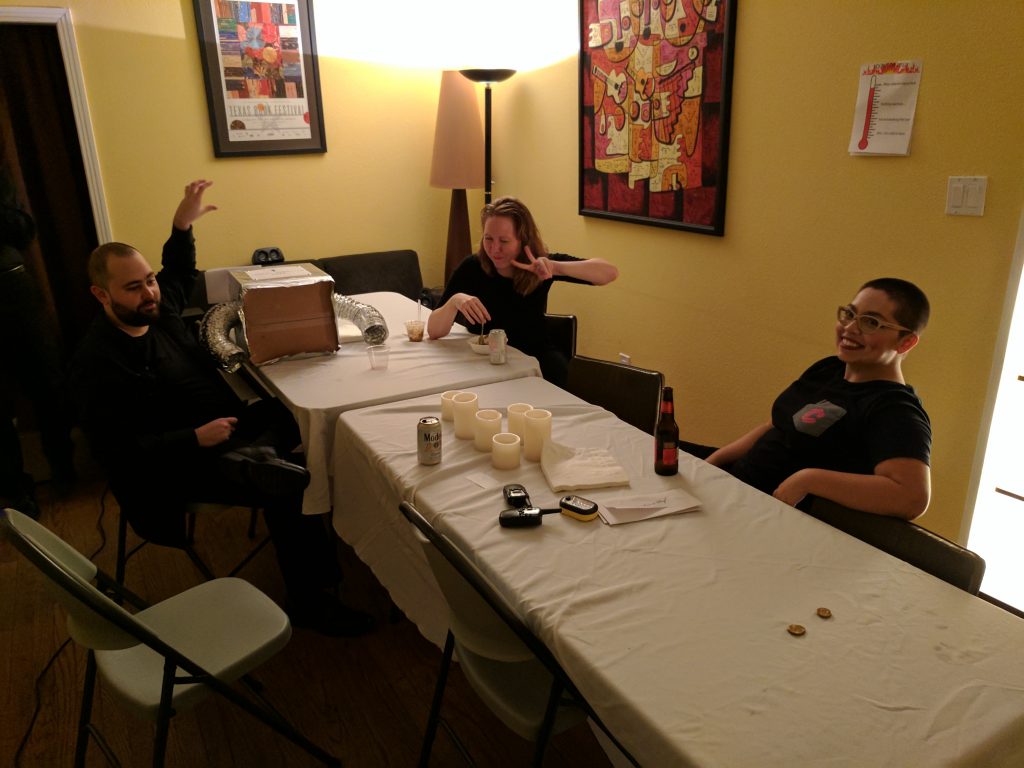

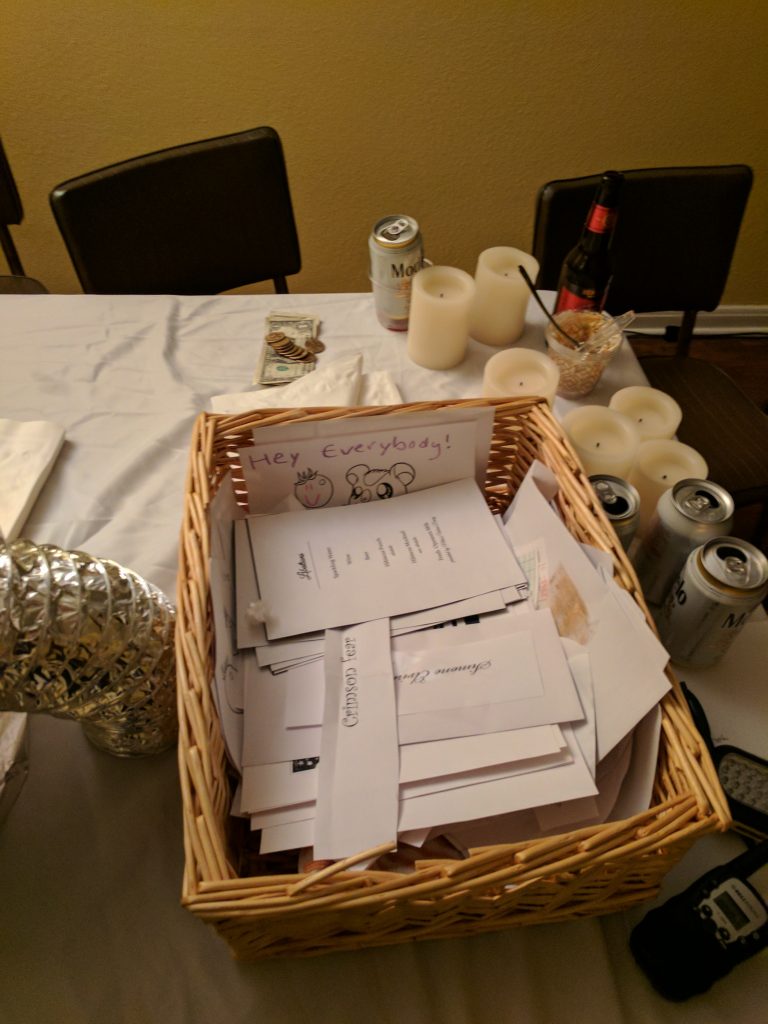
Planning
I made up a master script and planning spreadsheet that included columns like
- Length (min)
- Step
- Props – starting location – person responsible
- Sounds/Music/Lights needed
- Highest Priorities / Props that need obtained or made beforehand
Thre were 42 detailed steps and we posted the script around backstage and kept track of time as we went. Another spreadsheet had our growing list of skit ideas. Everything was kept in google drive, including the artifacts, signs, menus, and other documents we used during the show. I also created a post-show survey to get feedback from guests.
Looking Forward
Season #1 was very simple. But since I was involved it didn’t take long before my eyes were set on Season #2 and the whole thing got more ambitious…
